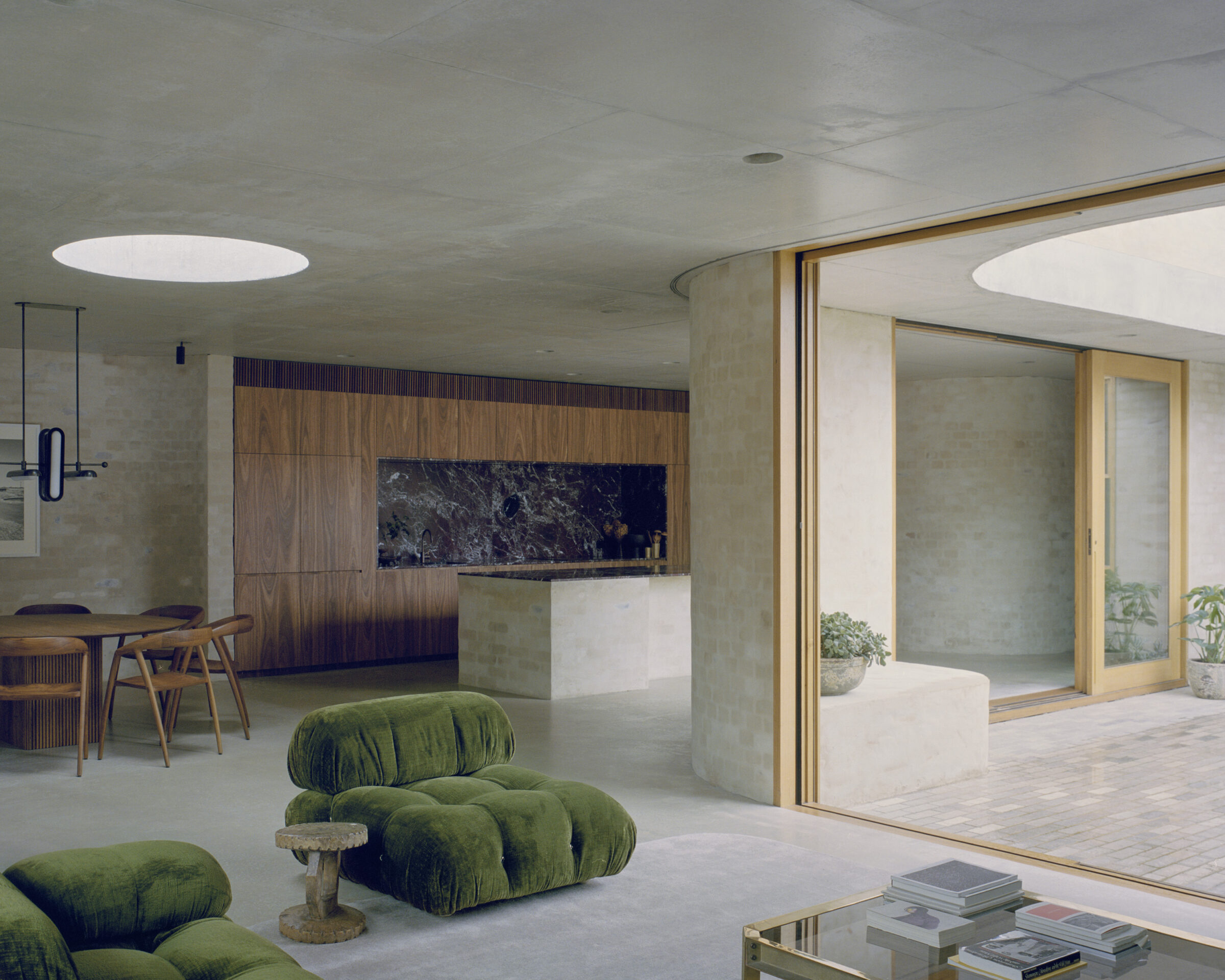Around the turn of the 20th century, when Australia became a commonwealth, houses sporting terra-cotta roof tiles, brick chimneys, clay pots, and prominent verandas sprouted up across the country’s burgeoning suburbs. A kind of down-under take on the Queen Anne style, Federation architecture was aesthetically dominant for decades.
The style’s charms are still evident today. But so are its limitations, particularly the way traditional examples all-too-successfully separated the inside from the outside. At least, that’s what a family of five thought when they commissioned Edition Office to rethink their circa-1907 house. The structure felt distinctly disconnected from its surroundings, at once too dark and too visible from the bustling street before it.
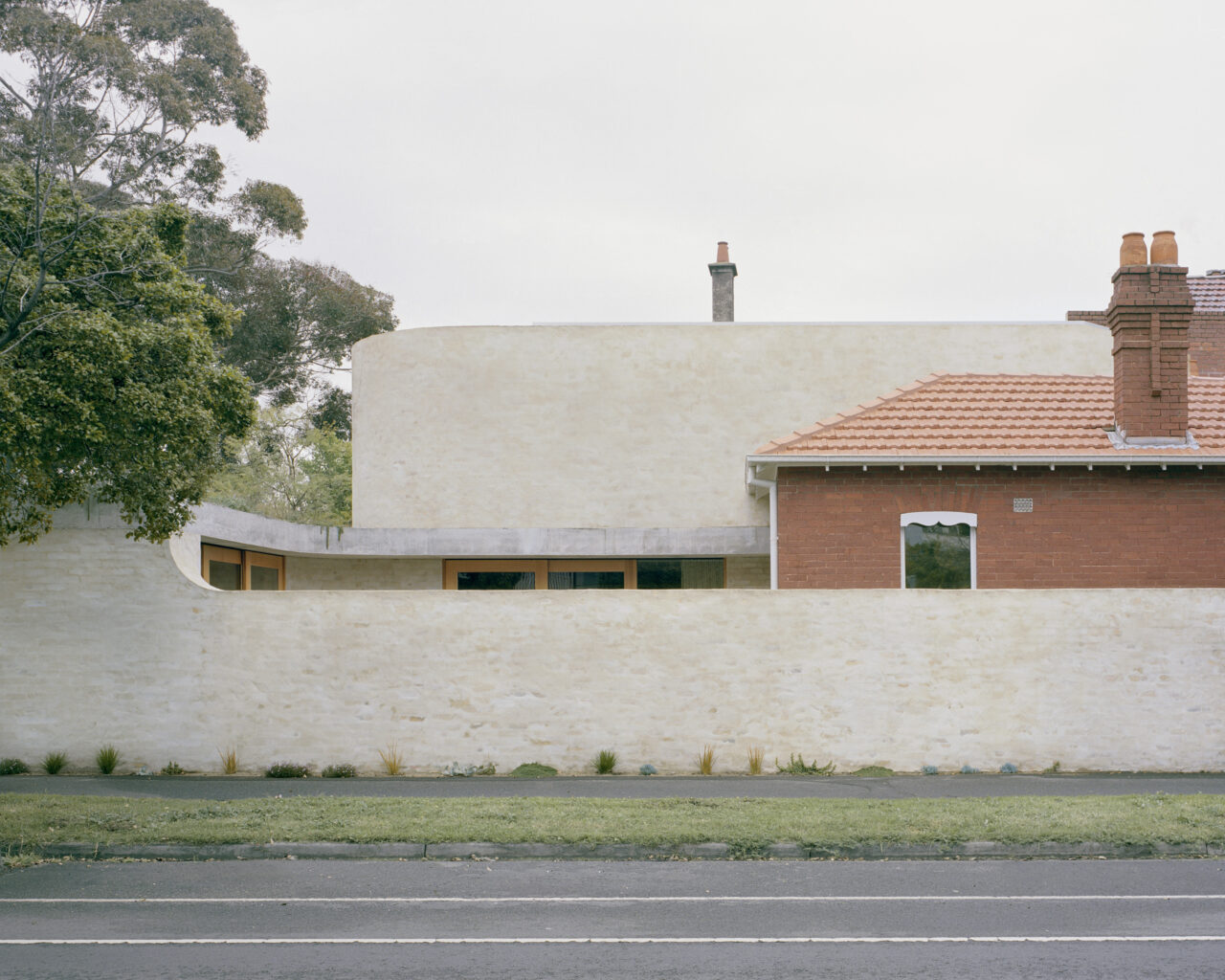
“What we wanted to do,” Kim Bridgland, a director of the Melbourne-based Edition Office, told AN Interior, “was to visually stitch the project into the fabric of its neighborhood.” Perhaps counterintuitively, this involved walling off the original house via a discreet expanse of recycled brick that rises just high enough to offer a glimpse of the domestic zones behind it. The brick wall wraps around the property, embracing the heritage architecture while encompassing newly built forms. These include a wing of social spaces and a pair of volumes atop the new structure’s concrete roof, dramatically upping the area of the home while also offering punctuation to the nearby rows of Victorian houses. (And respectfully not cutting off any of their neighbors’ access to sunlight.) The brickwork has a custom finish that is scraped on with a trowel and dry rubbed with a sponge, which unifies the wall. It continues inside and is also used for the kitchen island.
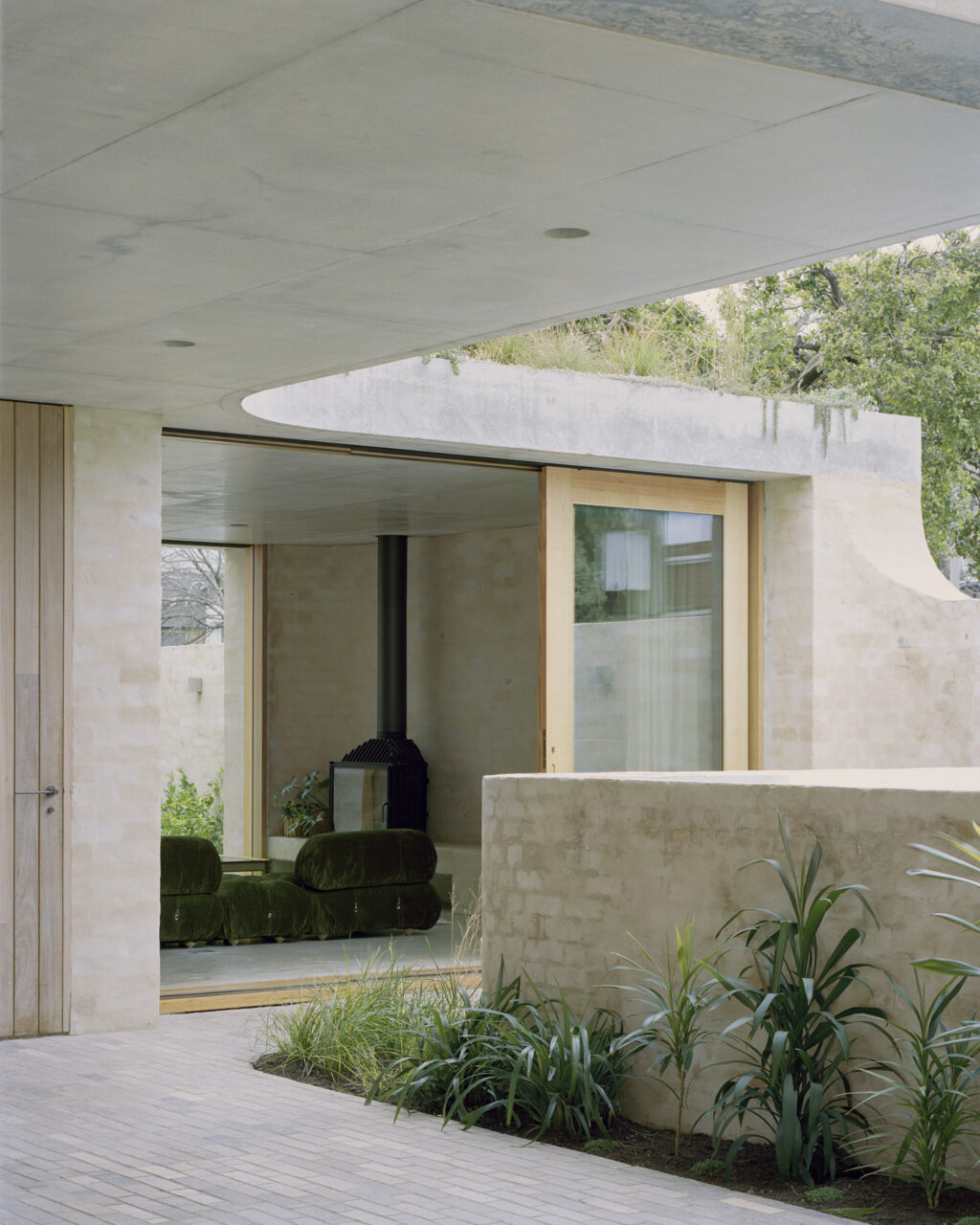
“The brickwork language,” Bridgland said, “makes the kitchen and dining room, the lounge and courtyard, and even the pool space feel like rooms of their house whether they’re indoors or outside. Whatever is behind the perimeter wall becomes a room of the house.”
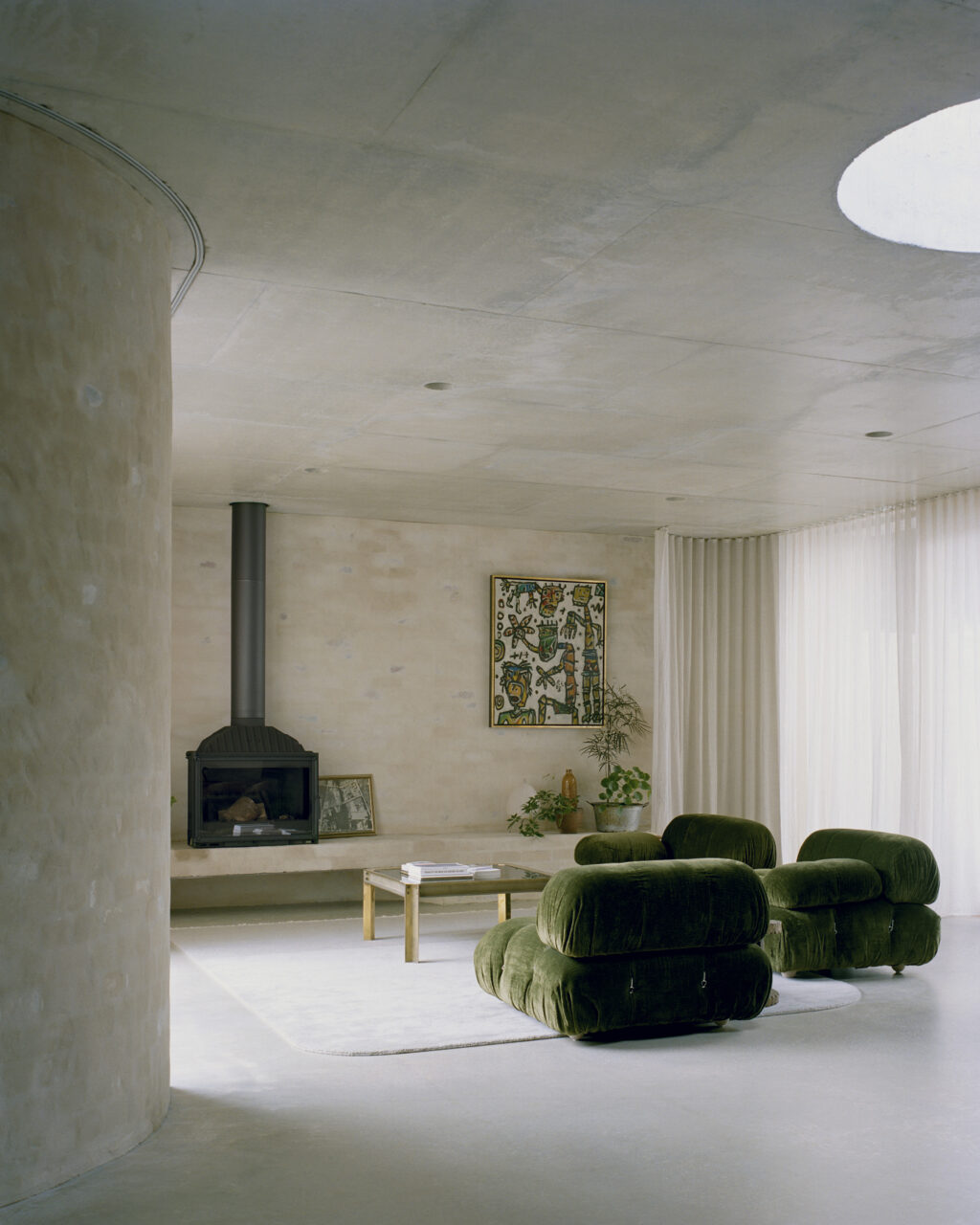
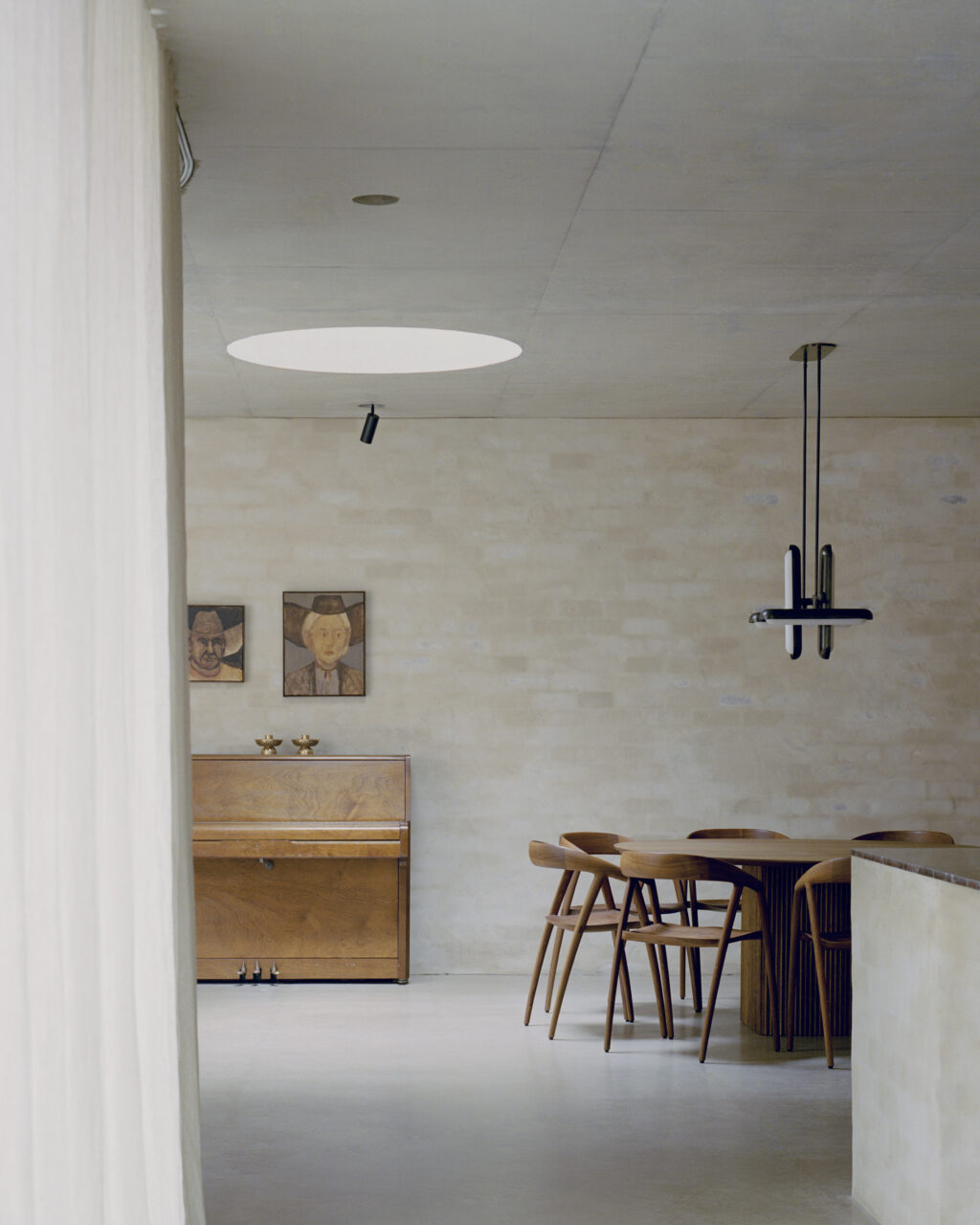
A different material unites the kitchen with the private rooms, some ringed in circular walls, in the upstairs volumes. “We wanted the parents’ bedroom and their studio space to be quiet, fully immersive sanctuaries,” Bridgland remarked. The spaces are fully enveloped in warm, grainy spotted-gum plywood, the same species used for the ample kitchen cabinetry. Well, not exactly the same: “Our intention was to use the same material everywhere,” he remembered. But as construction began, so did the brushfire tragedy in eastern Australia. “It burned out literally billions of hectares of the forests that were the resource for this product,” he says. “We got the last few sheets of the plywood. It was vital that we used it upstairs so it could be a holistic space.” Luckily, they had enough strips left over so that workers could affix them onto kitchen cabinets.
Resources elsewhere were recycled, including the brick and the tiles on the original front porch. “We had to reset the whole terrace,” Bridgland said, “because it was all sunken and some of the tiles were missing. We sourced them from salvage yards so that they’re all the same.”
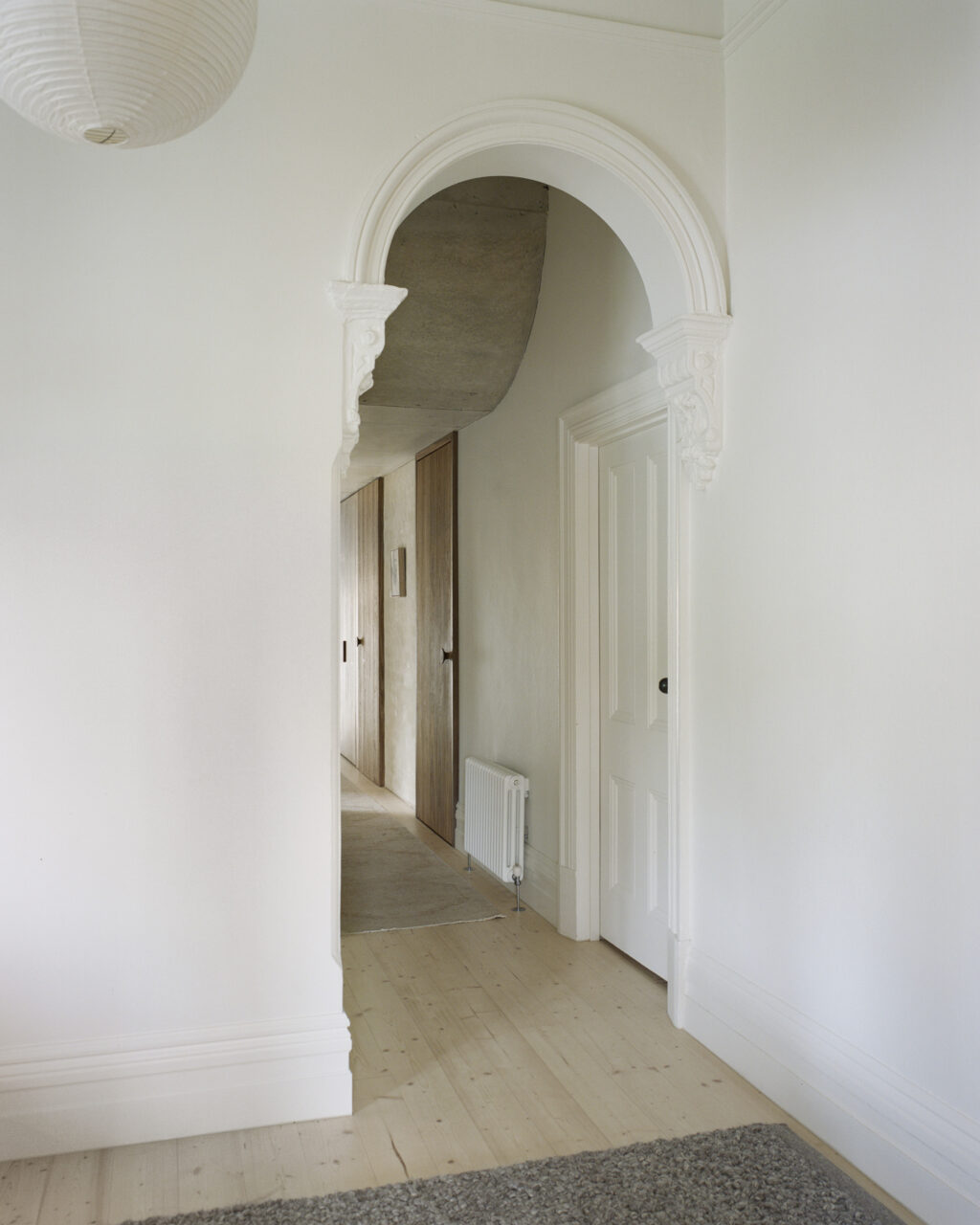
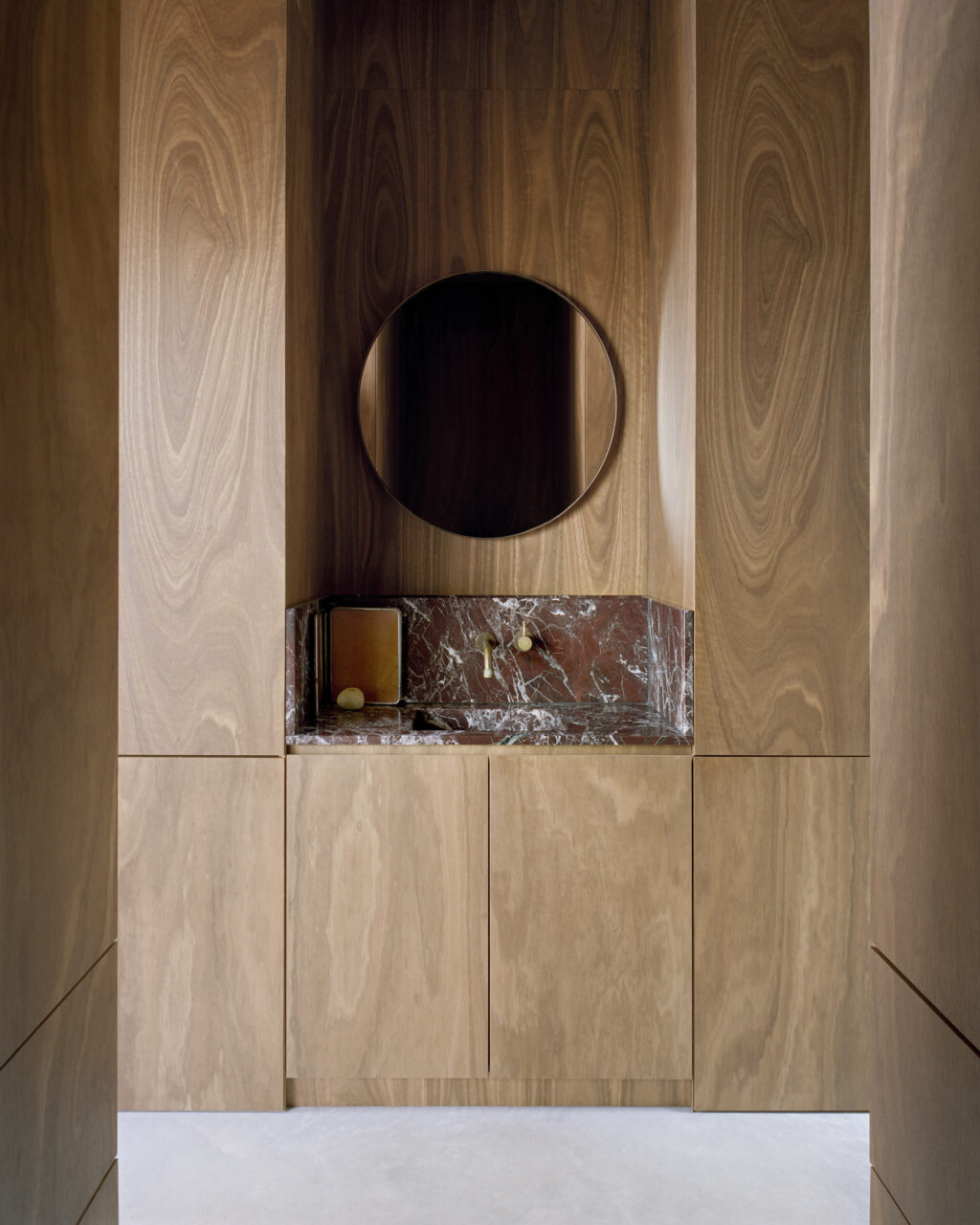
From the concrete floors and ceilings to the galvanized steel ground-floor staircase, all other materials are heavy-duty but look lighter than air and will look better as they wear. “The family has three boys, all of them fully active in sports,” he shared. “It’s a refined and rough-and-tumble house, I suppose—one that will age gracefully.”
